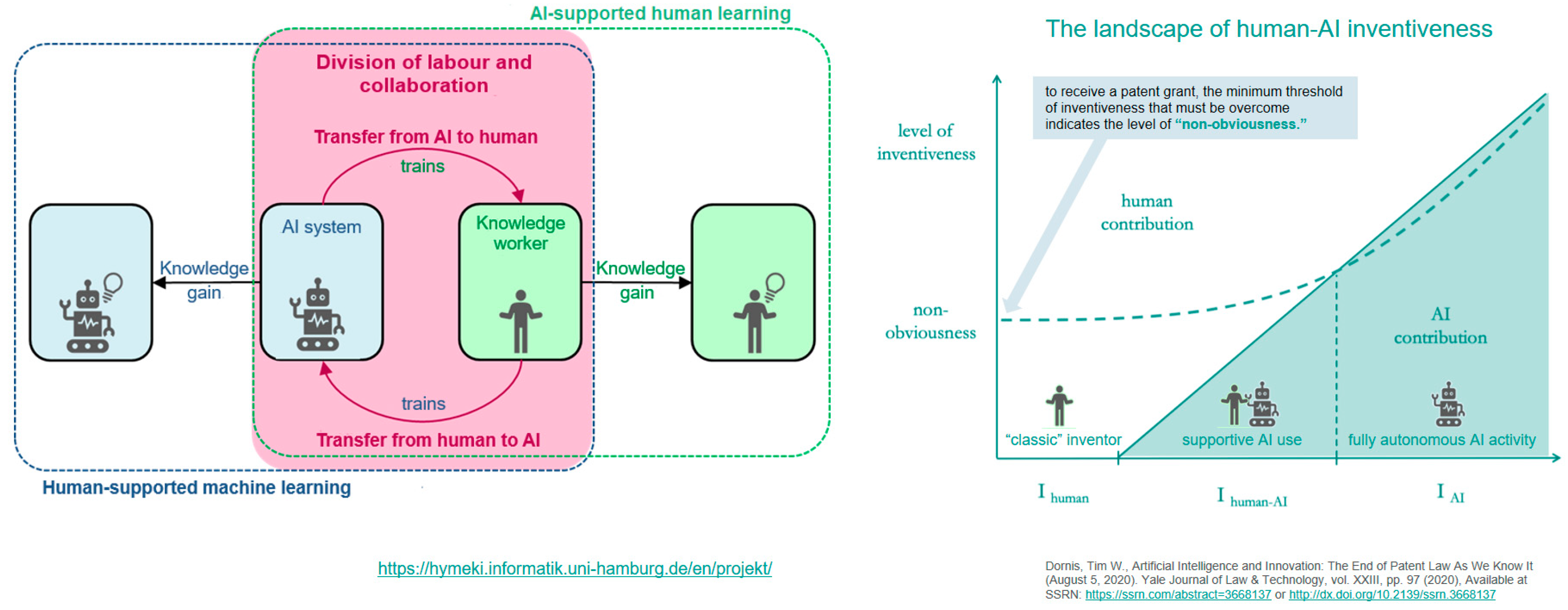Training and Preparing Tomorrow’s Workforce for the Fourth Industrial Revolution
Abstract
1. Drivers of Change in Education—Are We Prepared?
“The illiterate of the 21st century will not be those who cannot read and write, but those who cannot learn, unlearn, and relearn”.Alvin Toffler (1928–2016)
2. Tomorrow’s Skills in a Fast-Changing World
- Developing a culture of innovation that embraces disruptive technologies;
- attracting and retaining the right talent, moving to more collaborative, less adversarial contractual arrangements;
- developing a more diverse and inclusive workforce were the topmost challenges identified.
2.1. Developing a Culture of Innovation That Embraces Disruptive Technologies: Preparing for the 4th Industrial Revolution—Matching Education Demand with Education Supply
“The education systems […] must help people learn how to learn, with a focus on problem-solving and collaboration […] provide the foundations for learning, from reading, writing and mathematics to scientific, digital, social and emotional skills […] develop students’ capacity to adapt to the rapidly changing world of work […and] be accessible to all from the earliest stages and throughout their lives”.
2.2. Attracting and Retaining the Right Talent: Closing the Talent and Skills Gap
2.3. Differentiating Human Skills and Capabilities from AI: An Effective Solutions Framework to Future-Proof Our Education System
- Creativity: AI can neither plan creatively nor conceptually nor strategically. AI is excellent at optimising for a specific goal, but it cannot choose its own goals or think creatively. AI also cannot think across domains or apply common sense.
- Empathy: AI cannot feel or interact with emotions such as empathy and compassion. Therefore, AI cannot make another person feel understood and cared for. Even if AI improves in this area, it will be a challenge to develop the technology to the point where people feel comfortable interacting with robots in situations that require caring and empathy, or what we might call ‘human touch services’.
- Dexterity: AI and robotics cannot perform complex physical tasks that require dexterity or precise hand-eye coordination. AI cannot deal with unfamiliar and unstructured spaces, especially those it has not observed.
3. The Necessary Transformation of the Workforce
4. A Breakthrough in Education
“we have to transform what is essentially an industrial model of education, a manufacturing model, which is based on linearity and conformity and batching people. [For the university of the future], we have to move to a model based more on principles of agriculture. We have to recognize that human flourishing is not a mechanical process–it’s an organic process. And you cannot predict the outcome of human development. All you can do, like a farmer, is create the conditions under which they will begin to flourish”.
5. Case Study on Gamification, Simulations and Serious Games
- Comprehensive understanding of the current state of the art in the field of “Gamification, Simulations and Serious Games” in teaching at universities worldwide;
- formation of an informal network of interested parties;
- forming an international network of subject matter experts;
- identifying the potential for success for the application
- compilation of the findings and stock take of accessible materials for general use on a website (output and utilisation).
5.1. Context and Initial Situation
5.2. Definitions of Gamification, Game Elements and Dynamics
5.3. Gamification as a Teaching Tool
5.4. Nudging in Education
5.5. What Is the Case for Gamification in Education?
5.6. How can Educators Implement Gamification?
5.7. What Are the Criticisms of Gamification?
5.8. What Kind of Game Elements Are There and What Are Their Effects?
5.9. Serious Games—Technological Outlook and Stocktake of Available Learning Games
6. Adopting Novel Approaches in Engineering Education
7. Mitigating the Disruptions during the Transition
8. Conclusions
Author Contributions
Funding
Institutional Review Board Statement
Informed Consent Statement
Data Availability Statement
Acknowledgments
Conflicts of Interest
References
- World Economic Forum (WEF). The Global Risks Report 2022, 17th ed.; World Economic Forum: Cologny, Switzerland, 2022. [Google Scholar]
- Parkinson, A. The rationale for developing global competence. Online J. Glob. Eng. Educ. 2009, 4, 2. [Google Scholar]
- Hovik, S.; Hanssen, G.S. The impact of network management and complexity on multi-level coordination. Public Adm. 2015, 93, 506–523. [Google Scholar] [CrossRef]
- Thomann, E.; Trein, P.; Maggetti, M. What’s the problem? Multilevel governance and problem-solving. Eur. Policy Anal. 2019, 5, 37–57. [Google Scholar] [CrossRef]
- Thurner, S.; Hanel, R.; Klimek, P. Introduction to the Theory of Complex Systems; Oxford University Press: Oxford, UK, 2018. [Google Scholar]
- Vemuri, V. Modeling of Complex Systems: An Introduction; Academic Press: Cambridge, MA, USA, 2014. [Google Scholar]
- Hofkirchner, W.; Schafranek, M. General system theory. In Philosophy of Complex Systems; Elsevier: Amsterdam, The Netherlands, 2011; pp. 177–194. [Google Scholar]
- Passos, D.S.D.; Coelho, H.; Sarti, F.M. From Resilience to the Design of Antifragility. In Proceedings of the PESARO 2018: The Eighth International Conference on Performance, Safety and Robustness in Complex Systems and Applications, Athens, Greece, 22–26 April 2018. [Google Scholar]
- Cousins, B. Design thinking: Organizational learning in VUCA environments. Acad. Strateg. Manag. J. 2018, 17, 1–18. [Google Scholar]
- Russell, J.S. Shaping the Future of the Civil Engineering Profession. J. Constr. Eng. Manag. 2013, 139, 654–664. [Google Scholar] [CrossRef]
- Russell, J.S.; Hanna, A.; Bank, L.C.; Shapira, A. Education in construction engineering and management built on tradition: Blueprint for tomorrow. J. Constr. Eng. Manag. 2007, 133, 661–668. [Google Scholar] [CrossRef]
- Organisation for Economic Co-operation and Development (OECD). Building Back Better: A Sustainable, Resilient Recovery after COVID-19; OECD Publishing: Washington, WA, USA, 2020. [Google Scholar]
- National Academy of Engineering (NAE). Grand Challenges for Engineering. Available online: http://www.engineeringchallenges.org/ (accessed on 17 June 2022).
- Bongardt, A.; Torres, F. The European Green Deal: More than an Exit Strategy to the Pandemic Crisis, a Building Block of a Sustainable European Economic Model. JCMS J. Common Mark. Stud. 2022, 60, 170–185. [Google Scholar] [CrossRef]
- European Commission. The European Green Deal. In Communication from the Commission to the European Parliament, the European Council, the European Economic and Social Committee and the Committee of the Regions; European Commission: Brussels, Belgium, 2019. [Google Scholar]
- European Commission. Europe’s Digital Decade: Digital Targets for 2030. Available online: https://ec.europa.eu/info/strategy/priorities-2019-2024/europe-fit-digital-age/europes-digital-decade-digital-targets-2030_en (accessed on 1 October 2022).
- European Commission. EU taxonomy for sustainable activities-What the EU Is Doing to Create an EU-Wide Classification System for Sustainable Activities. Available online: https://ec.europa.eu/info/business-economy-euro/banking-and-finance/sustainable-finance/eu-taxonomy-sustainable-activities_en (accessed on 17 June 2022).
- Organisation for Economic Co-operation and Development (OECD). PISA—Preparing our Youth for an Inclusive and Sustainable World; OECD: Paris, France, 2018. [Google Scholar]
- World Economic Forum (WEF). Infrastructure and Urban Development Industry Vision 2050; World Economic Forum: Cologny, Switzerland, 2018. [Google Scholar]
- McKinsey. The Best Ideas from the 2018 Global Infrastructure Initiative. Available online: https://www.mckinsey.com/business-functions/operations/our-insights/the-best-ideas-from-the-2018-global-infrastructure-initiative (accessed on 1 October 2022).
- National Intelligence Council. Global Trends 2040: A More Contested World; Cosimo, Incorporated; National Intelligence Council: Washington, WA, USA, 2021. [Google Scholar]
- Schwab, K. The Fourth Industrial Revolution; Penguin Books Limited: London, UK, 2017. [Google Scholar]
- Schwab, K. The Fourth Industrial Revolution: What it Means, How to Respond; World Economic Agenda: Cologny, Switzerland, 2016. [Google Scholar]
- Bühler, M.M.; Buffet, P.; Castagnino, S. The Fourth Industrial Revolution is about to Hit the Construction Industry. Here’s How it Can Thrive. In Proceedings of the World Economic Forum Agenda, Davos, Switzerland, 22–26 January 2018; Available online: https://www.weforum.org/agenda/2018/06/construction-industry-future-scenarios-labour-technology/ (accessed on 1 October 2022).
- Buehler, M.M. Reinventing Leadership-10 Imperative Leadership Aptitudes you will Need as a Systemic Leader; World Economic Forum Agenda: Cologny, Switzerland, 2016. [Google Scholar]
- Sakhapov, R.; Absalyamova, S. Fourth Industrial Revolution and the Paradigm Change in Engineering Education. MATEC Web Conf. 2018, 245. [Google Scholar] [CrossRef]
- Goldin, C.; Katz, L.F. The Race between Education and Technology; Harvard University Press: Cambridge, MA, USA, 2010. [Google Scholar]
- United Nations Educational Scientific and Cultural Organization (UNESCO). Human Learning in the Digital Era; UNESCO Publishing: Paris, France, 2019. [Google Scholar]
- UNESCO. Humanistic Futures of Learning: Perspectives from UNESCO Chairs and UNITWIN Networks; UNESCO Publishing: Paris, France, 2020. [Google Scholar]
- UNESCO. Engineering: Issues, Challenges and Opportunities for Development; UNESCO Publishing: Paris, France, 2010. [Google Scholar]
- United Nations. Education Transformation Needed for ‘Inclusive, just and Peaceful World’—UN Chief. Available online: https://news.un.org/en/story/2022/09/1127011 (accessed on 1 October 2022).
- Organisation for Economic Co-operation and Development (OECD). OECD Future of Education and Skills 2030; OECD: Washington, DC, USA, 2019. [Google Scholar]
- Rotatori, D.; Lee, E.J.; Sleeva, S. The evolution of the workforce during the fourth industrial revolution. Hum. Resour. Dev. Int. 2021, 24, 92–103. [Google Scholar] [CrossRef]
- Hüsing, T.; Korte, W.B.; Dashja, E. e-Skills in Europe–Trends and Forecasts for the European ICT Professional and Digital Leadership Labour Markets (2015-2020); Empirica Gesellschaft für Kommunikations und Technologieforschung mbH: Bonn, Germany, 2015. [Google Scholar]
- World Economic Forum (WEF). The Future of Jobs-Employment, Skills and Workforce Strategy for the Fourth Industrial Revolution; World Economic Forum: Cologny, Switzerland, 2016. [Google Scholar]
- Milano, M. The Digital Skills Gap is Widening Fast. Here’s How to Bridge It; World Economic Forum Agenda: Davos, Switzerland, 2019. [Google Scholar]
- Willcocks, L. Robo-Apocalypse cancelled? Reframing the automation and future of work debate. J. Inf. Technol. 2020, 35, 286–302. [Google Scholar] [CrossRef]
- Glassberg-Sands, E.B.V. Who is First (and Last) in the Race to Build a Workforce Fit for the Future? World Economic Forum: Geneva, Switzerland, 2019. [Google Scholar]
- Chui, M.; Manyika, J.; Miremadi, M. The countries most (and least) likely to be affected by automation. Harv. Bus. Rev. 2017, 12. Available online: https://hbr.org/2017/04/the-countries-most-and-least-likely-to-be-affected-by-automation (accessed on 1 October 2022).
- World Economic Forum (WEF). Strategies for the New Economy: Skills as the Currency of Labour Market; World Economic Forum: Geneva, Switzerland, 2019. [Google Scholar]
- Organisation for Economic Co-operation and Development (OECD). The Future of Work; OECD Publishing: Washington, DC, USA, 2019. [Google Scholar] [CrossRef]
- Rahmat, A.M.; Mohd Adnan, A.H.; Mohtar, N.M. Industry 4.0 skillsets and ‘career readiness’: Can Malaysian university students face the future of work? In Proceedings of the International Invention, Innovative & Creative (InIIC) Conference Series; MNNF Publisher: Kuala Lumpur, Malaysia, 2019; pp. 28–37. [Google Scholar]
- European Commission. Horizon Europe, Cluster 4—Digital, Industry and Space, Preliminary List of Ideas for Discussion Regarding Potential Topics for the Work Programme. European Commission: Brussels, Belgium. 2023-24, v 31/01/22. 2022. Available online: https://pdf4pro.com/amp/view/cluster-4-digital-industry-and-space-786dde.html (accessed on 1 October 2022).
- The Future of Construction Website. Future of Construction: A Central Platform to Exchange Best Practices and Ideas Guiding the Infrastructure and Urban Development Industry in Its Transformation and Helping It to Address Its Key Challenges. Available online: https://futureofconstruction.org/practice/ (accessed on 1 October 2022).
- World Economic Forum (WEF). Shaping the Future of Construction—An Action Plan to solve the Industry’s Talent Gap; World Economic Forum: Geneva, Switzerland, 2018. [Google Scholar]
- American Society of Civil Engineers (ASCE). A Vision for the Future of Structural Engineering and Structural Engineers: A Case for change; ASCE: Reston, VA, USA, 2013. [Google Scholar]
- World Economic Forum (WEF). Shaping the future of construction: A breakthrough in mindset and technology. In Proceedings of World Economic Forum; World Economic Forum: Geneva, Switzerland, 2016. [Google Scholar]
- World Economic Forum (WEF). Shaping the Future of Construction—An Action Plan to Accelerate Building Information Modeling (BIM) Adoption; World Economic Forum: Geneva, Switzerland, 2018. [Google Scholar]
- McKinsey. The Great Attrition Is Making Hiring Harder. Are You Searching the Right Talent Pools? Available online: https://www.mckinsey.com/capabilities/people-and-organizational-performance/our-insights/the-great-attrition-is-making-hiring-harder-are-you-searching-the-right-talent-pools (accessed on 2 October 2022).
- Senge, P.M.; Scharmer, C.O.; Jaworski, J.; Flowers, B.S. Presence: Human Purpose and the Field of the Future; SoL: Cambridge, UK, 2004. [Google Scholar]
- Dwivedi, Y.K.; Hughes, L.; Ismagilova, E.; Aarts, G.; Coombs, C.; Crick, T.; Duan, Y.; Dwivedi, R.; Edwards, J.; Eirug, A. Artificial Intelligence (AI): Multidisciplinary perspectives on emerging challenges, opportunities, and agenda for research, practice and policy. Int. J. Inf. Manag. 2021, 57, 101994. [Google Scholar] [CrossRef]
- Lee, K.F.; Qiufan, C. AI 2041: Ten Visions for Our Future; Ebury Publishing: London, UK, 2021. [Google Scholar]
- Rainie, L.; Anderson, J. The Future of Jobs and Jobs Training; Pew Research Center: Washington, WA, USA, 2018. [Google Scholar]
- LinkedIn Inc. The Skills Companies Need the Most in 2019; LinkedIn Talent Blog: Sunnyvale, CA, USA, 2019; Available online: https://directemployers.org/2019/02/13/the-skills-companies-need-most-in-2019/ (accessed on 1 October 2022).
- Huppert, M. 3 Business Leaders Share the Most Important Soft Skills They Look for in a New Hire; LinkedIn Talent Blog: Sunnyvale, CA, USA, 2017; Available online: https://www.linkedin.com/business/talent/blog/talent-acquisition/business-leaders-share-the-most-important-soft-skills-they-look-for (accessed on 1 October 2022).
- World Economic Forum (WEF). The Future of Jobs Report 2018; World Economic Forum: Geneva, Switzerland, 2018. [Google Scholar]
- World Economic Forum (WEF). Schools of the Future—Defining New Models of Education for the Fourth Industrial Revolution; World Economic Forum: Geneva, Switzerland, 2020. [Google Scholar]
- Dellermann, D.; Calma, A.; Lipusch, N.; Weber, T.; Weigel, S.; Ebel, P. The future of human-AI collaboration: A taxonomy of design knowledge for hybrid intelligence systems. arXiv 2021, arXiv:2105.03354. [Google Scholar]
- Wilber, K. Integral Politics: Its Essential Ingredients; Integral Life: Boulder, CO, USA, 2018. [Google Scholar]
- Robinson, K.; Aronica, L. Creative Schools: Revolutionizing Education from the Ground Up; Penguin: London, UK, 2015. [Google Scholar]
- Dornis, T.W. Artificial intelligence and innovation: The end of patent law as we know it. Yale JL Tech. 2020, 23, 97. [Google Scholar] [CrossRef]
- Wannemacher, K.; Bodmann, L. Künstliche Intelligenz an den Hochschulen. In Potenziale und Herausforderungen in Forschung, Studium und Lehre sowie Curriculumentwicklung; Hochschulforum Digitalisierung: Berlin, Germany, 2021. [Google Scholar]
- Fonseca, X.; Slingerland, G.; Lukosch, S.; Brazier, F. Designing for meaningful social interaction in digital serious games. Entertain. Comput. 2021, 36, 100385. [Google Scholar] [CrossRef]
- Lameras, P.; Arnab, S.; Dunwell, I.; Stewart, C.; Clarke, S.; Petridis, P. Essential features of serious games design in higher education: Linking learning attributes to game mechanics. Br. J. Educ. Technol. 2017, 48, 972–994. [Google Scholar] [CrossRef]
- Ouriques, L.; Castro, D.; Olieveira, D.; Seibert, J.; Xéxeo, G.; Mangeli, E. A Systematic Mapping of Gamification in Higher Education. Dev. Bus. Simul. Exp. Learn. 2021, 48, 47–60. [Google Scholar]
- Almeida, F.; Simoes, J. The Role of Serious Games, Gamification and Industry 4.0 Tools in the Education 4.0 Paradigm. Contemp. Educ. Technol. 2019, 10, 120–136. [Google Scholar] [CrossRef]
- Juan, A.A.; Loch, B.; Daradoumis, T.; Ventura, S. Games and simulation in higher education. Int. J. Educ. Technol. High. Educ. 2017, 14. [Google Scholar] [CrossRef]
- de Almeida, J.E.S.C. Serious Games as a Behaviour Elicitation Tool: Applications to Evacuation Scenarios. Ph.D. Thesis, Universidade do Porto (Portugal), Porto, Portugal, 2016. [Google Scholar]
- Ahmed, A.; Sutton, M.J.D. Gamification, serious games, simulations, and immersive learning environments in knowledge management initiatives. World J. Sci. Technol. Sustain. Dev. 2017, 14, 78–83. [Google Scholar] [CrossRef]
- Sirotová, M.; Michvocíková, V.; Hosťovecký, M. Serious Games in University Education of Future Teachers; Peter Lang: Berlin, Germany, 2021. [Google Scholar] [CrossRef]
- Cai, Y.; Goei, S.L.; Trooster, W. Simulation and Serious Games for Education; Springer: Berlin/Heidelberg, Germany, 2016. [Google Scholar]
- Dijkmans, C.; Vinkesteijn, J. Management Simulation Tool “Emerald Forest”; Digital Transformation in Cultural Tourism: Breda, The Netherlands, 2010. [Google Scholar]
- Todorova, M.; Tzonkova, V.; Byanova, N. Serious games in economics. Digit. Present. Preserv. Cult. Sci. Herit. II 2012, 2, 187–192. [Google Scholar] [CrossRef]
- Göbel, S.; Garcia-Agundez, A.; Tregel, T.; Ma, M.; Hauge, J.B.; Oliveira, M.; Marsh, T.; Caserman, P. Serious Games: 4th Joint International Conference, JCSG 2018, Darmstadt, Germany, 7–8 November 2018, Proceedings; Springer: Berlin/Heidelberg, Germany, 2018; Volume 11243. [Google Scholar]
- Chachanidze, E. Serious games in engineering education. In Proceedings of the Conference Proceedings of eLearning and Software for Education; eLSE: Oxford, UK, 2019; pp. 78–82. [Google Scholar]
- Silva, P.; Mesquita, A. Gamification, Serious Games and Simulations: Experiences and Contributions of International Projects in Higher Education. In Advances in Tourism, Technology and Systems; Springer: Singapore, 2021; pp. 430–438. [Google Scholar] [CrossRef]
- Loh, C.S.; Sheng, Y.; Ifenthaler, D. Serious Games Analytics; Springer International Publishing: Berlin/Heidelberg, Germany, 2015; Volume 10, pp. 973–978. [Google Scholar]
- Zhonggen, Y. A meta-analysis of use of serious games in education over a decade. Int. J. Comput. Games Technol. 2019, 2019, 4797032. [Google Scholar] [CrossRef]
- de Paz, B.M. Gamification: A Tool to Improve Sustainability Efforts. Ph.D. Thesis, University of Manchester, Manchester, UK, 2013. [Google Scholar]
- Landesmedienzentrum. Was Ist Gamification? Bayerisches Staatsministerium für Unterricht und Kultus: Munich, Germany; Available online: https://www.mebis.bayern.de/infoportal/faecher/uebergreifend/was-ist-gamification/ (accessed on 18 June 2022).
- Pädagogische Hochschule Ludwigsburg (PHL). Gamification und Bildung—Wenn Schule zum Spiel Wird; Pädagogische Hochschule Ludwigsburg: Ludwigsburg, Germany, 2016. [Google Scholar]
- Dorling, A.; McCaffery, F. The gamification of SPICE. In Proceedings of the International Conference on Software Process Improvement and Capability Determination; Springer: Berlin/Heidelberg, Germany, 2012; pp. 295–301. [Google Scholar]
- Stampfl, N.S. Die Verspielte Gesellschaft (TELEPOLIS): Gamification Oder Leben im Zeitalter des Computerspiels; Heise Verlag: Hanover, Germany, 2012. [Google Scholar]
- Ruggeri, K. Behavioral Insights for Public Policy: Concepts and Cases; Routledge: London, UK, 2018. [Google Scholar]
- Thaler, R.H.; Sunstein, C.R. Nudge: Improving Decisions about Health, Wealth, and Happiness; Penguin: London, UK, 2009. [Google Scholar]
- Weijers, R.J.; de Koning, B.B.; Paas, F. Nudging in education: From theory towards guidelines for successful implementation. Eur. J. Psychol. Educ. 2021, 36, 883–902. [Google Scholar] [CrossRef]
- Hansen, P.G.; Jespersen, A.M. Nudge and the manipulation of choice: A framework for the responsible use of the nudge approach to behaviour change in public policy. Eur. J. Risk Regul. 2013, 4, 3–28. [Google Scholar] [CrossRef]
- Osterweil, S. The Four Freedoms of Play; Harvard Business School (HBS), Ed.; Harvard Business School: Cambridge, MA, USA, 2019. [Google Scholar]
- Fischer, H. Lernst du noch oder spielst du schon? Zum Einsatz von GameDesign-Elementen in der Hochschullehre. In Proceedings of the DeLFI and GMW Workshops; Carsten Ullrich, Martin Wessner, Ed.; Carsten Ullrich, Martin Wessner: Chemnitz, Germany, 5 September 2017. [Google Scholar]
- Huang, W.H.-Y.; Soman, D. Gamification of education. Rep. Ser. Behav. Econ. Action. 2013, 29, 11–12. [Google Scholar]
- Fuchs, M.; Fizek, S.; Ruffino, P. Rethinking Gamification; Meson Press eG: Lüneburg, Germany, 2014. [Google Scholar]
- Ørngreen, R.; Meyer, B.; Buhl, M. ECEL 2019 18th European Conference on e-Learning; Academic Conferences and Publishing Limited: Cambridge, MA, USA, 2019. [Google Scholar]
- Renninger, K.A.; Hidi, S.E. The Cambridge Handbook of Motivation and Learning; Cambridge University Press: Cambridge, UK, 2019. [Google Scholar]
- Sutton, R.S.; Barto, A.G. Reinforcement Learning: An Introduction, 2nd ed.; MIT Press: Cambridge, MA, USA, 2018. [Google Scholar]
- Sahin, M.; Ifenthaler, D. Visualizations and Dashboards for Learning Analytics; Springer International Publishing: Berlin/Heidelberg, Germany, 2021. [Google Scholar]
- Harris, E. The Routledge Companion to Performance Management and Control; Taylor & Francis: Abingdon-on-Thames, UK, 2017. [Google Scholar]
- Walz, S.P.; Deterding, S. The Gameful World: Approaches, Issues, Applications; MIT Press: Cambridge, MA, USA, 2015. [Google Scholar]
- Savignac, E. The Gamification of Work: The Use of Games in the Workplace; Wiley: New York, NY, USA, 2017. [Google Scholar]
- Stieglitz, S.; Lattemann, C.; Robra-Bissantz, S.; Zarnekow, R.; Brockmann, T. Gamification: Using Game Elements in Serious Contexts; Springer International Publishing: Berlin/Heidelberg, Germany, 2016. [Google Scholar]
- Ehlers, U.D. Future Skills: The Future of Learning and Higher Education; Books on Demand: Norderstedt, Germany, 2020. [Google Scholar]
- Fletcher, B.; Ma, M.; Göbel, S.; Hauge, J.B.; Marsh, T. Serious Games: Joint International Conference, JCSG 2021, Virtual Event, 12–13 January 2022, Proceedings; Springer International Publishing: Berlin/Heidelberg, Germany, 2021. [Google Scholar]
- Kroker, B. Gamification im Unterricht. Betzold—Gemeinsam für Bildung; Arnulf Betzold GmbH: Ellwangen, Germany, 2021; Available online: https://www.betzold.de/blog/gamification/ (accessed on 1 October 2022).
- Tekinbas, K.S.; Zimmerman, E. Rules of Play: Game Design Fundamentals; MIT Press: Cambridge, MA, USA, 2003. [Google Scholar]
- Suter, B.; Bauer, R.; Kocher, M. Narrative Mechanics: Strategies and Meanings in Games and Real Life; Transcript Verlag: Bielefeld, Germany, 2021. [Google Scholar]
- Lankoski, P.; Björk, S. Game Research Methods: An Overview; ETC Press: Dartmouth, NS, Canada, 2015. [Google Scholar]
- Hess, K.; Colby, R.; Joseph, D. Deeper Competency-Based Learning: Making Equitable, Student-Centered, Sustainable Shifts; SAGE Publications: Thousand Oaks, CA, USA, 2020. [Google Scholar]
- National Academies of Sciences Engineering and Medicine. How People Learn II: Learners, Contexts, and Cultures; National Academies Press: Washington, WA, USA, 2018. [Google Scholar]
- Kellinger, J.J. A Guide to Designing Curricular Games: How to “Game” the System; Springer International Publishing: Berlin/Heidelberg, Germany, 2016. [Google Scholar]
- Chou, Y. Actionable Gamification: Beyond Points, Badges, and Leaderboards; Packt Publishing: Birmingham, UK, 2019. [Google Scholar]
- Sheldon, L. The Multiplayer Classroom: Designing Coursework as a Game; CRC Press: Boca Raton, FL, USA, 2020. [Google Scholar]
- Mystakidis, S. Metaverse. Encyclopedia 2022, 2, 486–497. [Google Scholar] [CrossRef]
- Wardhana, M.I. Learning Through a Social Gaming Platform. KnE Soc. Sci. 2021, 221–226. [Google Scholar] [CrossRef]
- Jagneaux, D. The Ultimate Roblox Book: An Unofficial Guide: Learn How to Build Your Own Worlds, Customize Your Games, and So Much More! Simon and Schuster: New York, NY, USA, 2018. [Google Scholar]
- Jovanović, A.; Milosavljević, A. VoRtex Metaverse platform for gamified collaborative learning. Electronics 2022, 11, 317. [Google Scholar] [CrossRef]
- Fernandes, F.; Werner, C. A Systematic Literature Review of the Metaverse for Software Engineering Education: Overview, Challenges and Opportunities; PRESENCE: Washington, WA, USA, 2022. [Google Scholar] [CrossRef]
- Ball, M. The Metaverse: And How it will Revolutionize Everything; Liveright Publishing: New York, NY, USA, 2022. [Google Scholar]
- Pollarolo, E.; Størksen, I.; Skarstein, T.H.; Kucirkova, N. Children’s critical thinking skills: Perceptions of Norwegian early childhood educators. Eur. Early Child. Educ. Res. J. 2022. [Google Scholar] [CrossRef]
- Leicht, A.; Heiss, J.; Byun, W.J. Issues and Trends in Education for Sustainable Development; United Nations Education, Scientific & Cultural Organization: London, UK, 2018. [Google Scholar]
- Graham, R. The Global State of the Art in Engineering Education; Massachusetts Institute of Technology: Cambridge, MA, USA, 2018. [Google Scholar]
- Crawley, E.F.; Hosoi, A.P.; Mitra, A.B. Redesigning Undergraduate Engineering Education at MIT—The New Engineering Education Transformation (NEET) initiative. ASEE Annu. 2018. [CrossRef]
- Wieman, C. Improving How Universities Teach Science: Lessons from the Science Education Initiative; Harvard University Press: Cambridge, MA, USA, 2017. [Google Scholar]
- Olin College of Engineering. About Olin; Oline College: Needham, MA, USA; Available online: http://www.olin.edu/about/ (accessed on 2 October 2022).
- Minnesota State University. Iron Range Engineering: Our Model; Minnesota State University: Mankato, MN, USA; Available online: https://www.ire.minnstate.edu/ (accessed on 1 October 2022).
- Das, S.; Kleinke, D.; Pistrui, D. Reimagining Engineering Education: Does Industry 4.0 Need Education 4.0? In Proceedings of the ASEE 2020 Annual Conference, Montréal, QC, Canada, 21–24 June 2020. [Google Scholar]
- Graham, R. The Global State-of-the-Art in Engineering Education: Outcomes of Phase 1 Benchmarking Study; Report from the New Engineering Education Transformation initiative; MIT: Cambridge, MA, USA, 2017. [Google Scholar]
- Boylan-Ashraf, P.C.; Freeman, S.A.; Shelley, M.C. A Case for a Reform in Teaching Introductory, Fundamental Engineering Mechanics Courses. In Proceedings of the 121st ASEE Annual Conference & Exposition-360 degrees of Engineering Education, Indianapolis, IN, USA, 15–18 June 2014. [Google Scholar]
- Newson, T.D.N. Case methods in civil engineering teaching. Can. J. Civ. Eng. 2011, 38, 1016–1030. [Google Scholar] [CrossRef]
- Syam, H.; Basri, M.; Abduh, A.; Patak, A.A.; Rosmaladewi. Hybrid e-Learning in Industrial Revolution 4.0 for Indonesia Higher Education. Int. J. Adv. Sci. Eng. Inf. Technol. 2019, 9, 1183. [Google Scholar] [CrossRef]
- Yadav, A.; Shaver, G.M.; Meckl, P. Lessons Learned: Implementing the Case Teaching Method in a Mechanical Engineering Course. J. Eng. Educ. 2010, 99, 55–69. [Google Scholar] [CrossRef]
- Yadav, A.; Vinh, M.; Shaver, G.M.; Meckl, P.; Firebaugh, S. Case-based instruction: Improving students’ conceptual understanding through cases in a mechanical engineering course. J. Res. Sci. Teach. 2014, 51, 659–677. [Google Scholar] [CrossRef]
- Freeman, S.; Eddy, S.L.; McDonough, M.; Smith, M.K.; Okoroafor, N.; Jordt, H.; Wenderoth, M.P. Active learning increases student performance in science, engineering, and mathematics. Proc. Natl. Acad. Sci. USA 2014, 111, 8410–8415. [Google Scholar] [CrossRef]
- Fulk, B.; Ghahari, S.; Hastak, M. Case study and apprenticeship pedagogy for training construction engineering students. In Proceedings of the 2017 IEEE Frontiers in Education Conference, Indianapolis, IN, USA, 18–21 October 2017; pp. 18–20. [Google Scholar]
- Paterson, J. St. John’s College Teaching Students to ’Learn How to Learn’; HigherEd Dive: Washington, WA, USA, 2018. [Google Scholar]
- Marber, P. The Most Forward-Thinking, Future-Proof College in America Teaches Every Student the Exact Same Stuff; Quarz Blog: New York, NY, USA, 2017. [Google Scholar]
- Azhari, B.; Ma’awiyah, A.; Hamid, M.; Ridhwan, M.; Bahri, S. E-Learning as connector among education institution in the 4th industrial revolution. J. Phys. Conf. Ser. 2020, 1471. [Google Scholar] [CrossRef]
- Burchell, B. The Employment Dosage: How Much Work is Needed for Health and Wellbeing? University of Cambridge, Judge Business School: Cambridge, UK; Available online: https://www.cbr.cam.ac.uk/research/research-projects/completed-projects/the-employment-dosage-how-much-work-is-needed-for-health-and-wellbeing/#item1 (accessed on 1 October 2022).
- Luksha, P.; Peskov, D. Global Education Futures: Agenda; iUniverse: Bloomington, IN, USA, 2019. [Google Scholar]
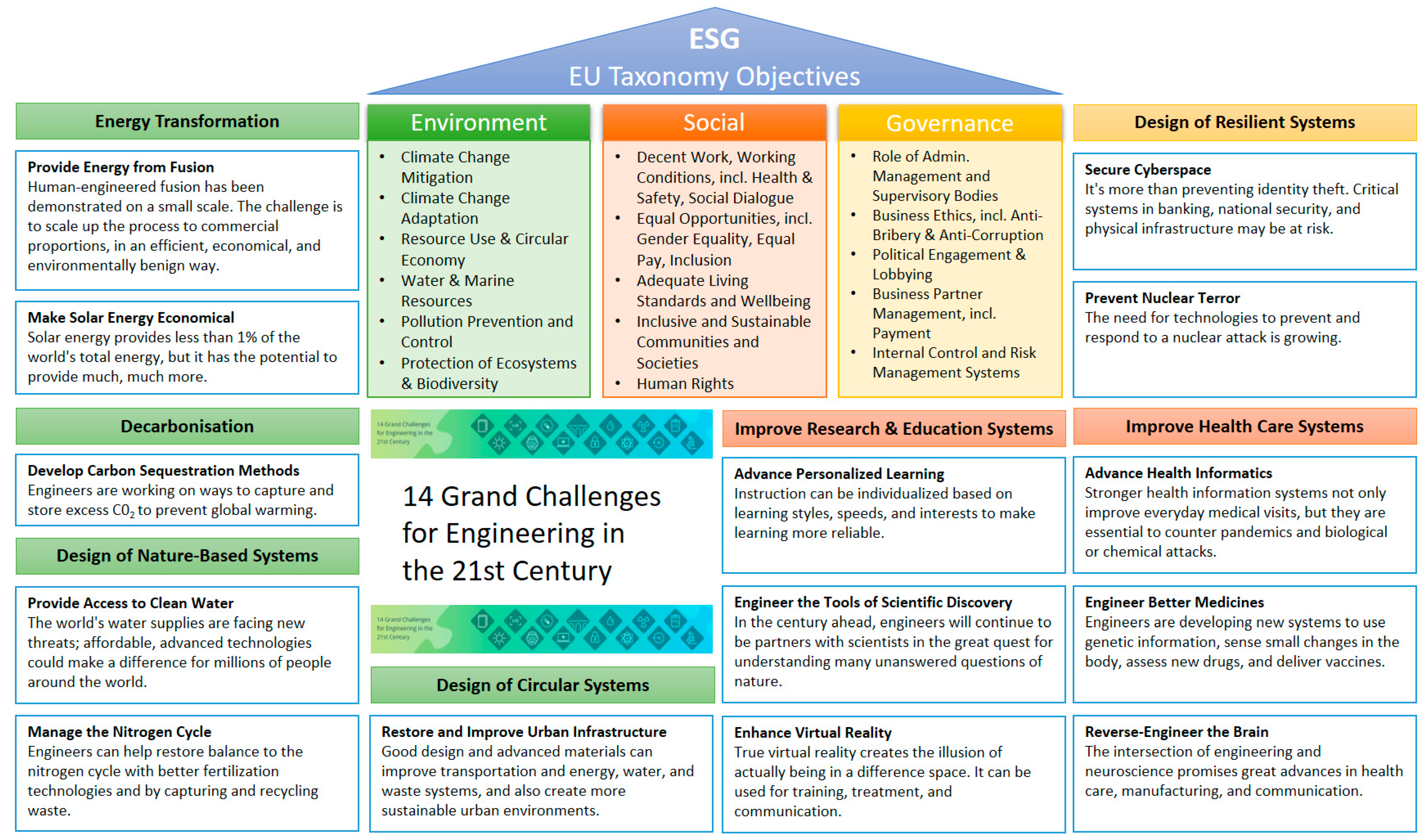

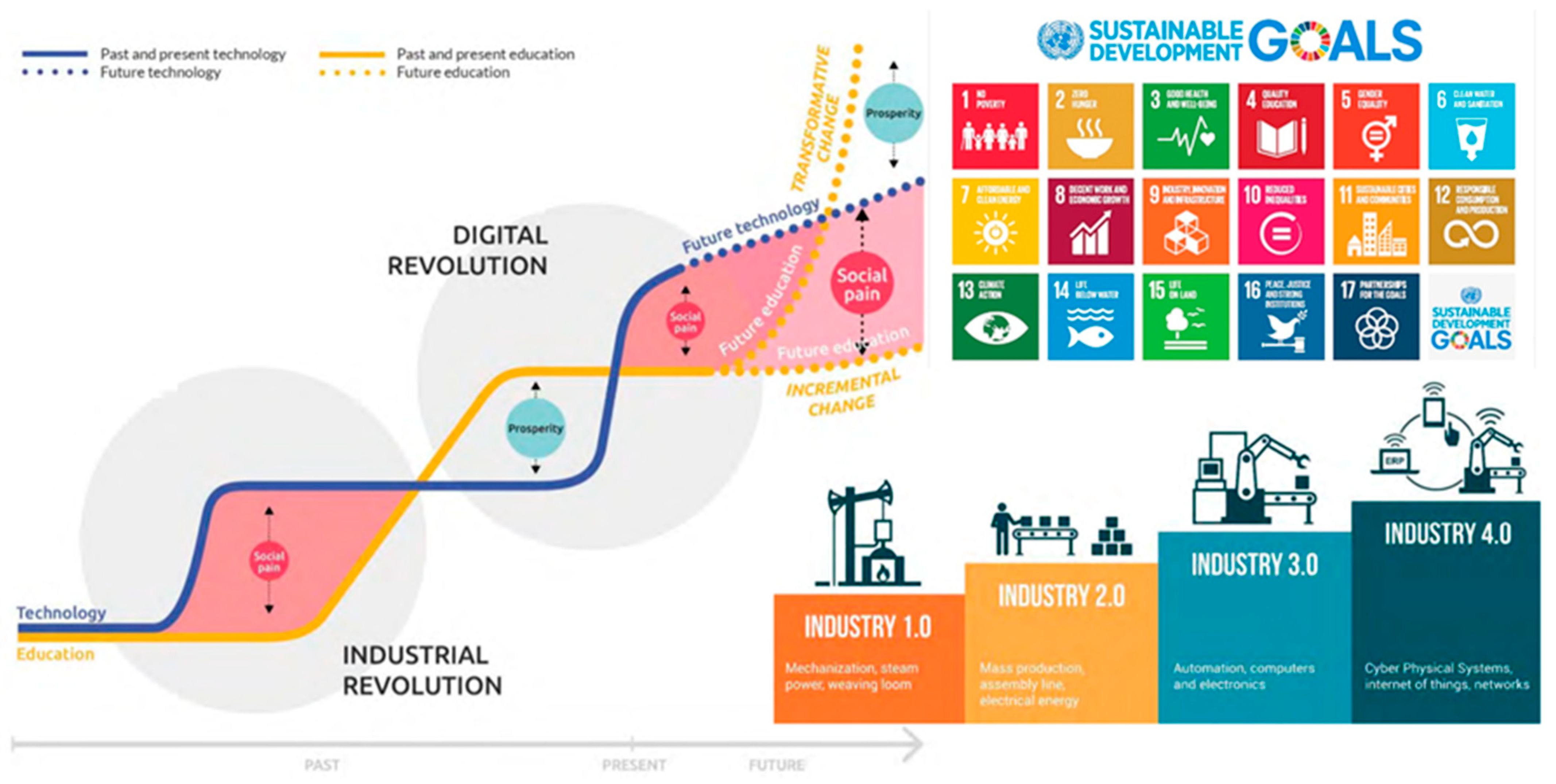
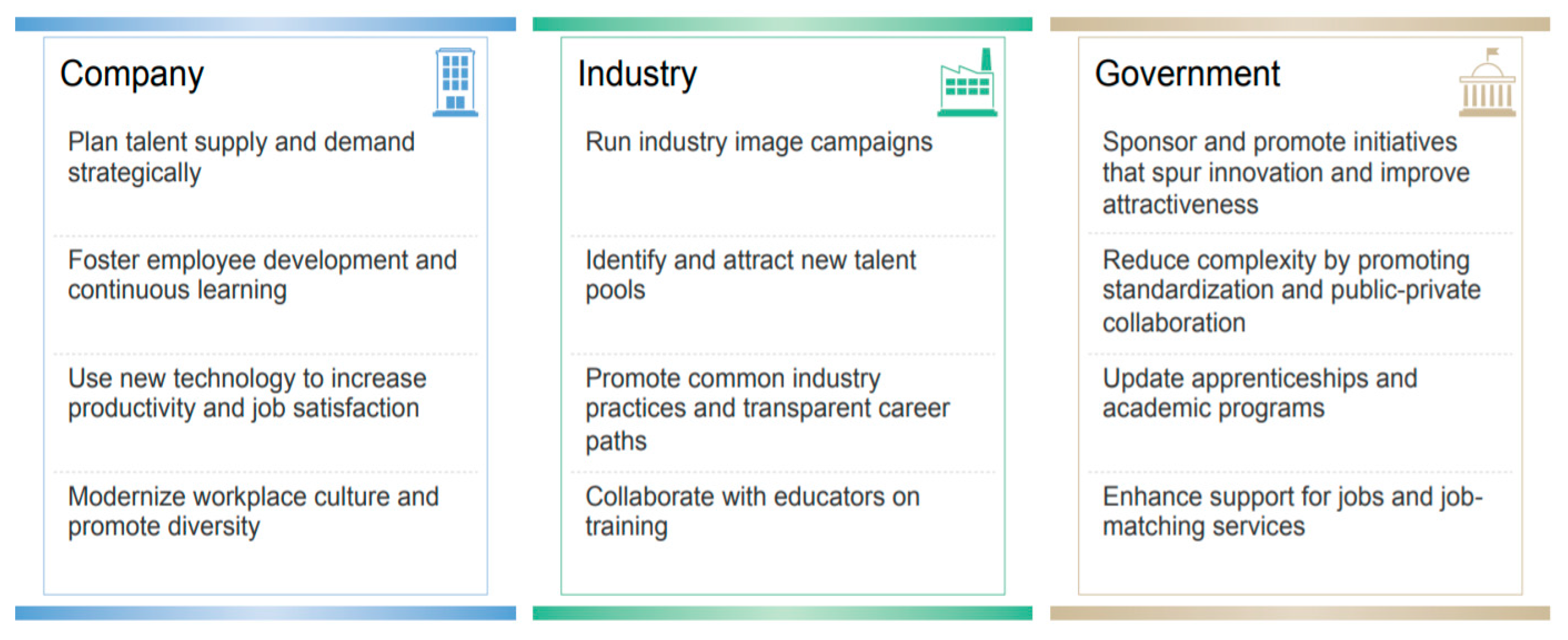

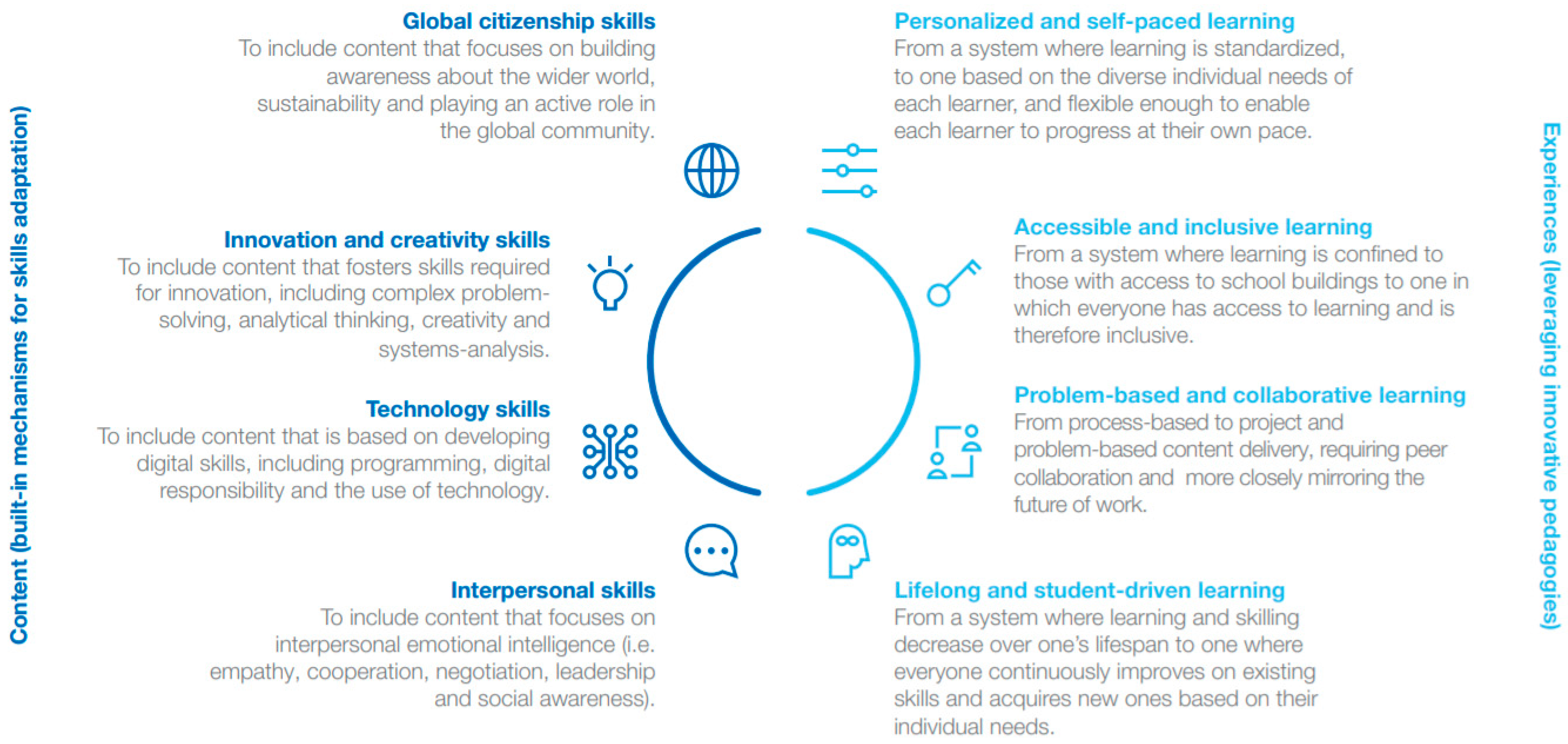
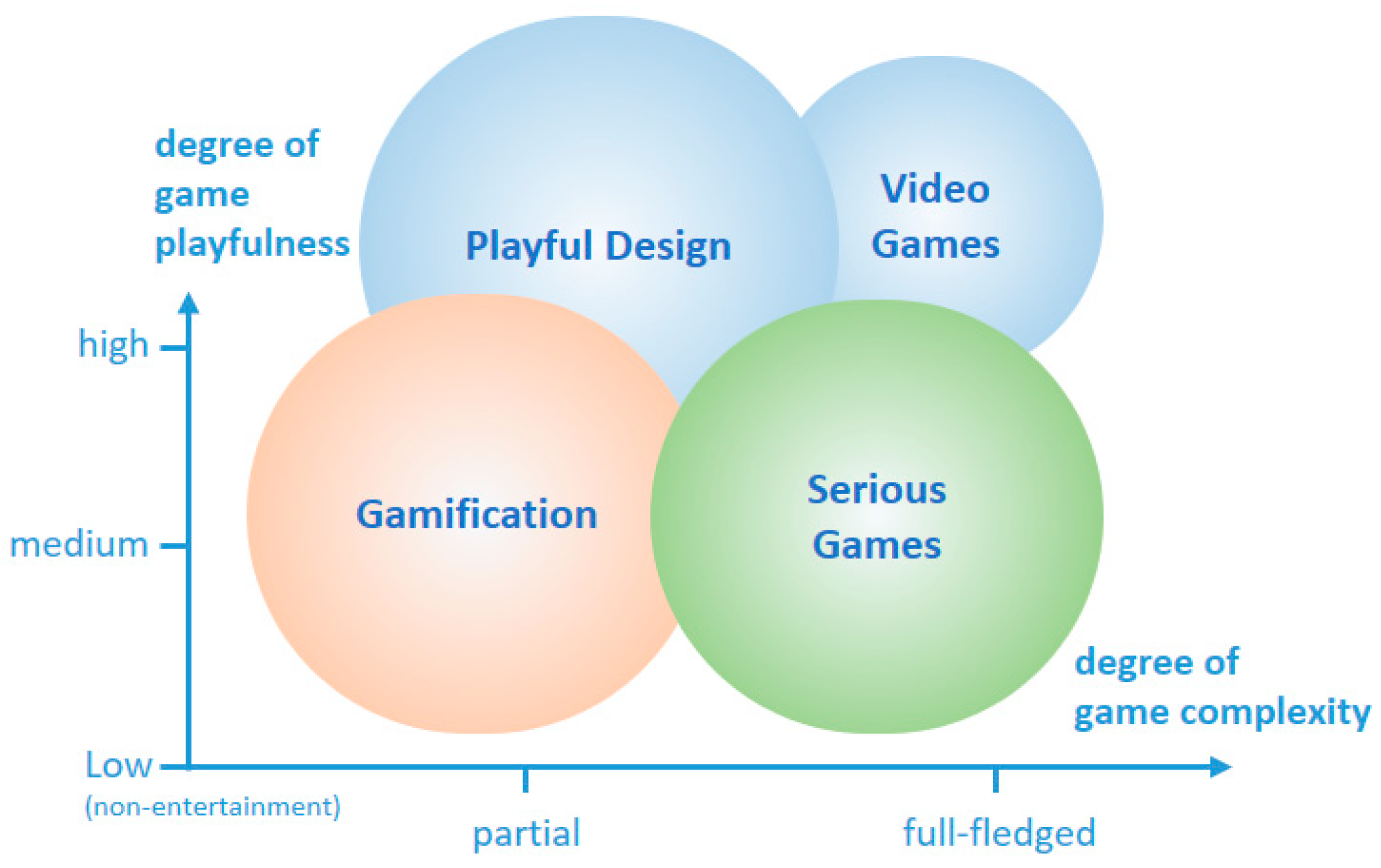
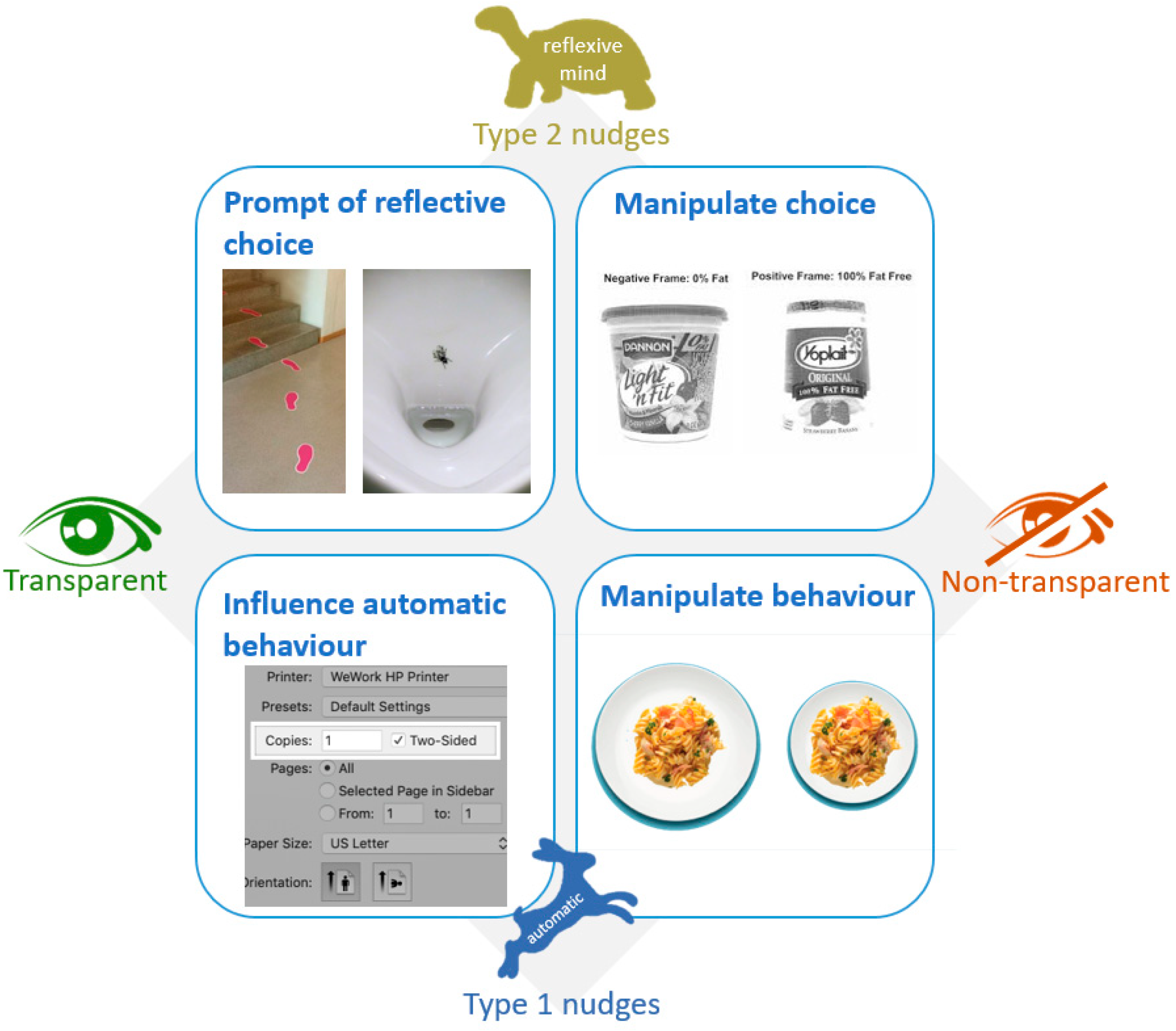
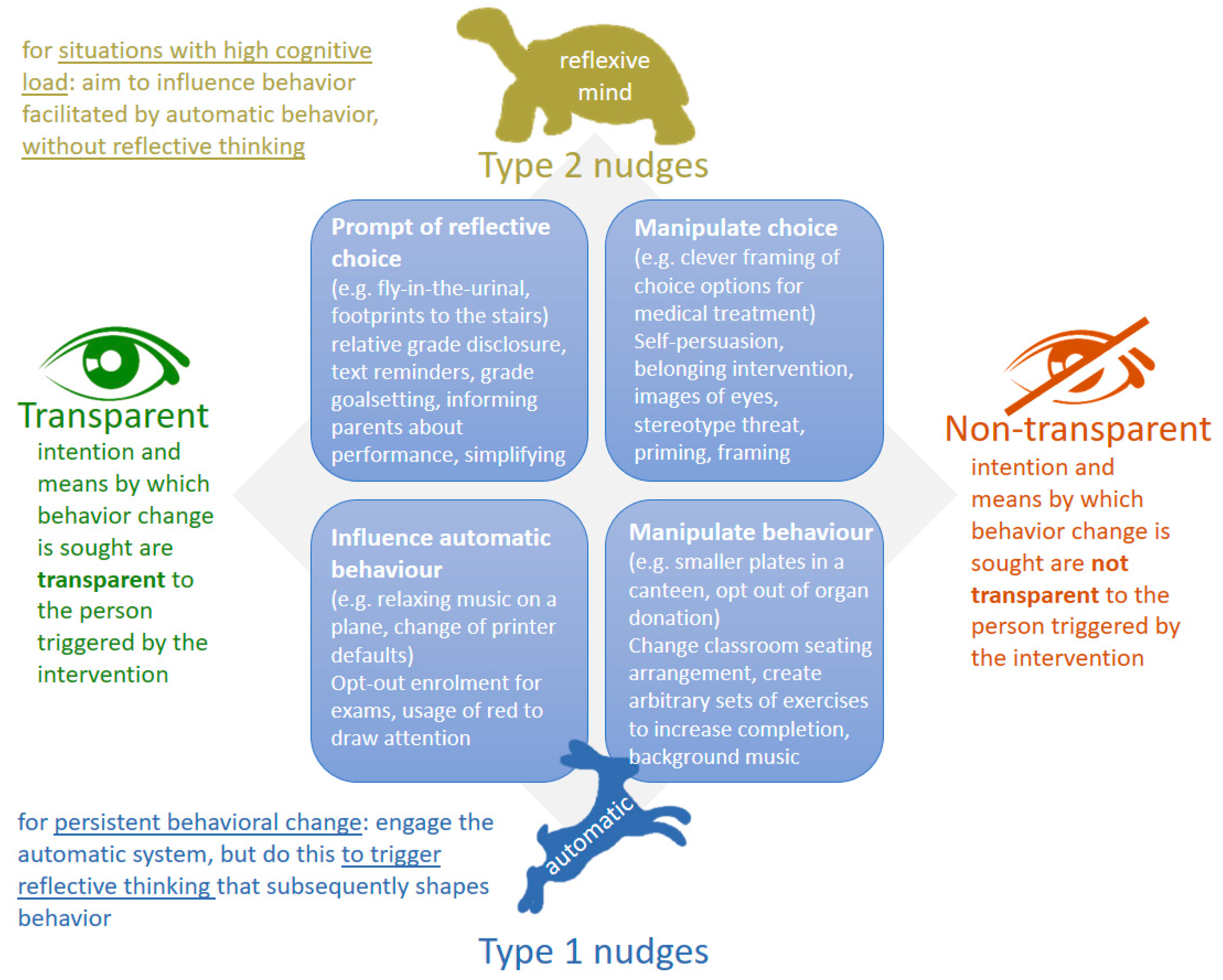
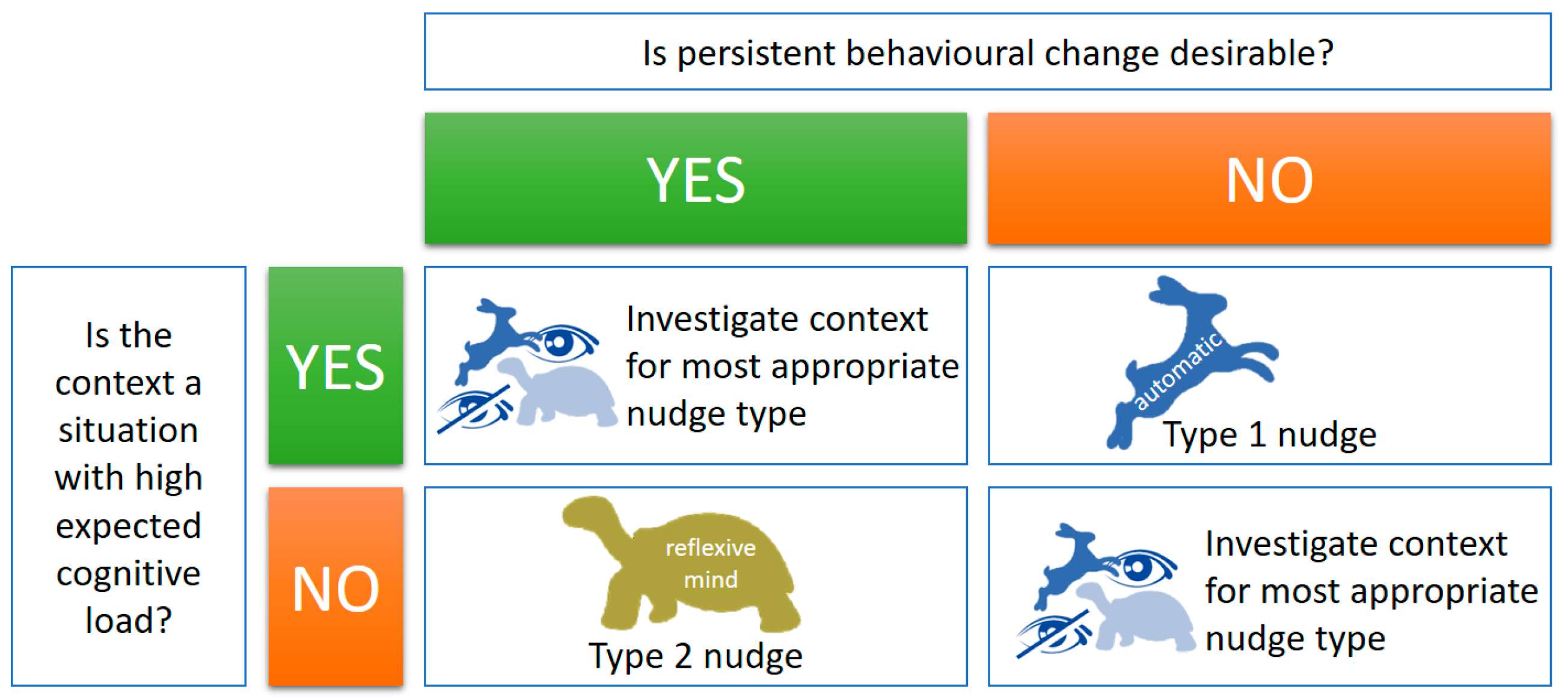
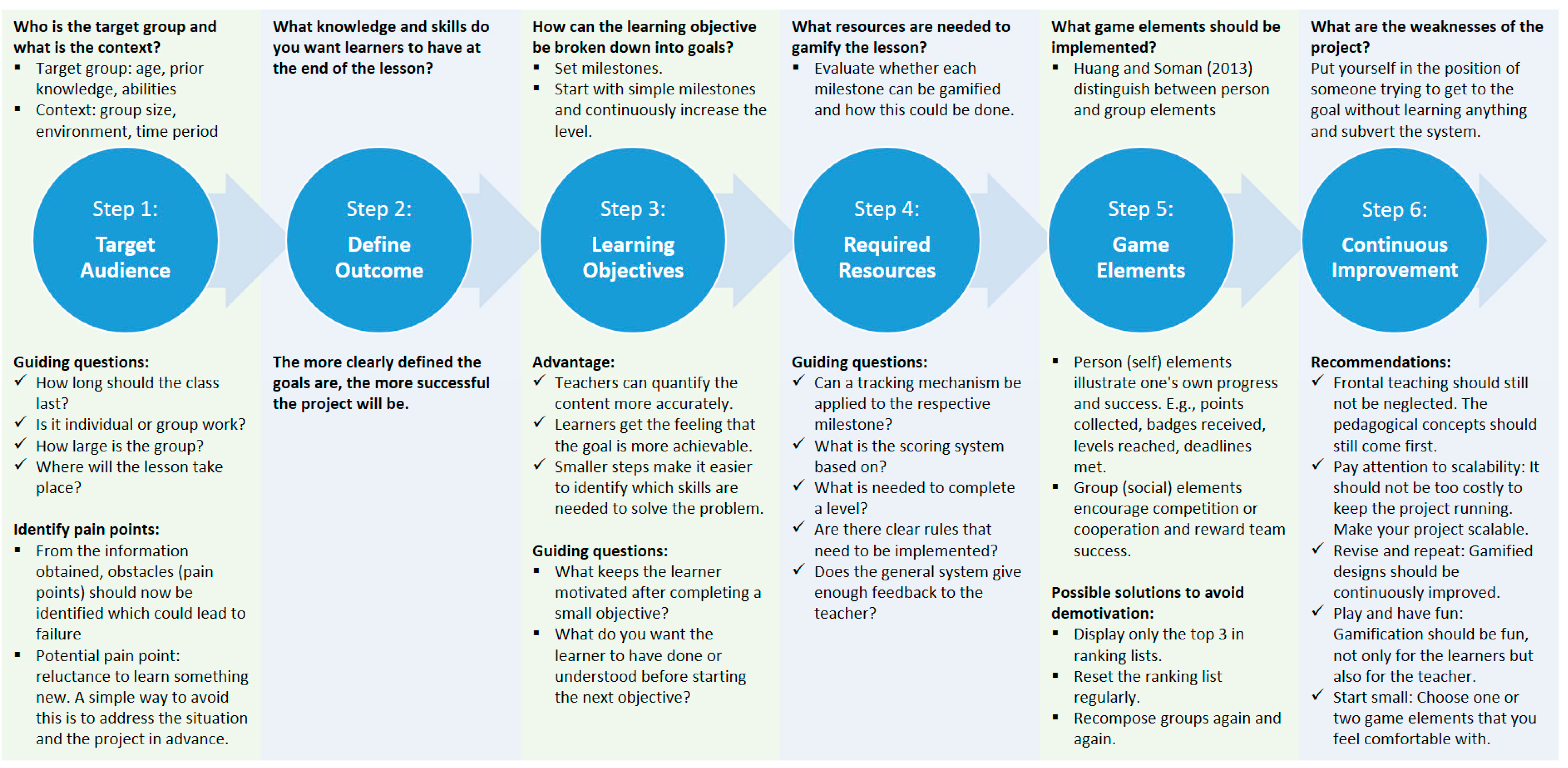
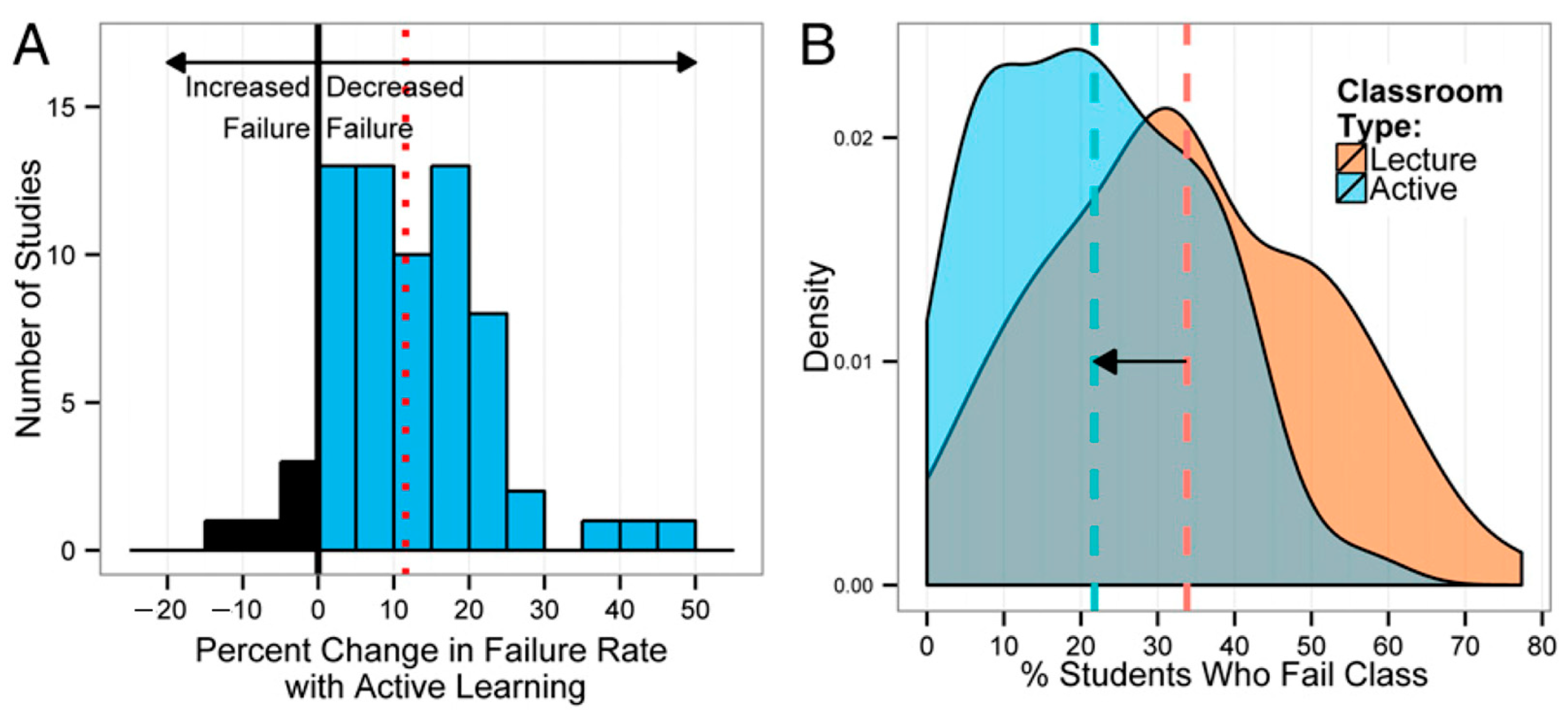
| Period | Era | Industrial Changes | Educational Changes |
|---|---|---|---|
| 18th to 19th century | 1st industrial revolution | Invention of steam engine, the transition from manual labor to machine | Emergence of labor specializations, establishment of trade schools, development of technical universities |
| 19th–beginning of 20th century | 2nd industrial revolution | Transition to electricity, development of transport, communications, development of high-tech industries | Development of a multi-level training system for industry, standardization of training, enhancement of the reputation of engineering education. |
| 2nd half of 20th to beginning of 21st century | 3rd industrial revolution | Transition to telecommunication technologies, automation of production, rapid development of services | Integration and globalization of education, development of academic mobility, transition to international education standards, increase in training of specialists for services |
| Beginning of 21st century | 4th industrial revolution | The Internet of things, integration of “cyber physical systems”, or CPS, in production processes, intelligent automation | Individualization and virtualization of education, strengthening the project-based and multidisciplinary character of engineering education, development of interactive educational resources |
| Name | Topic | Description | Cost | Number of players | Platform |
|---|---|---|---|---|---|
| Anne Frank House https://annefrankhousevr.com/ | History, VR | Immerse yourself in Anne’s thoughts as you traverse each faithfully recreated room, fully restored thanks to the power of VR, and find out what happened to the Annex’ brave inhabitants. | Free of charge | 1 | Gear VR, Oculus Go |
| Brilliant https://brilliant.org/educators/ | Mathematics, Technology, Computer Science | Brilliant replaces lecture videos with hands-on, interactive problem solving. It’s a better (and more fun) way to learn. | Free of charge | 1 | Browser, iOS, Android |
| Change Game https://www.changegame.org/ | Politics, Climate, Economy | Build a city in an urban, rural, mountain, coastal or island environment; Bring in power and water; Build manufacturing and service industries; Manage resources, trade them with other players; Invest in research, education and entertainment; Care for the health, happiness and prosperity of the community. | Free of charge | Up to 30 players | Android, iOS |
| Climate Adaptation Game https://www.smhi.se/en/climate/education/adaptation-game-1.153788 | Economy, Politics, Climate | The Climate Adaptation Game increases the understanding of what a warmer climate implicates and how we can adapt to it. The game is suitable for education in sustainable development and when starting to work with climate adaptation. | Free of charge | 1 | Browser |
| Climate Adaptation Game https://www.smhi.se/en/climate/education/climate-adaptation-game | Climate | The Climate Adaptation Game increases the understanding of what a warmer climate implicates and how we can adapt to it. | Free of charge | 1 | Browser |
| Climate Quest https://earthgames.org/games/climatequest/ | Climate | Climate disasters are occurring across the United States, but your 4 heroes have the skills to save countless lives and protect fragile ecosystems! Forecasts of climate disruptions appear all across the map, each based on real impacts selected from the US National Climate Assessment. | Free of charge | 1 | Browser, iOS, Android |
| Climate Trail https://www.theclimatetrail.com/ | Climate | The game is about climate refugees fleeing ever worsening conditions after inaction on climate has rendered much of the USA (and the world) uninhabitable. The game combines the adventure and play of the journey north with visual novel elements, where characters reveal how and why this climate apocalypse unfolded. | Free of charge | 1 | Windows, OSX, Linux, Android, iOS |
| Codewars https://www.codewars.com/ | Computer Science | Problem solving with achievements. Very successful for gamification. | Free of charge | 1 | Browser |
| Datacamp https://www.datacamp.com/?irclickid=Q2ExXOwNrxyIR811SZ0SoyHbUkG21kzRFVtdV00&irgwc=1 | Computer Science | Learn the data skills you need online at your own pace—from non-coding essentials to data science and machine learning. | Free of charge | 1 | Browser |
| Duolingo https://www.duolingo.com/ | Language | Gamified language learning. | Free of charge | 1 | Android, iOS, Browser |
| Escape Climate Change https://www.escape-climate-change.de/home.html | Climate | Escape Climate Change is an interactive game that approaches the topic of “climate protection” with fun and excitement. The concept is based on the idea of the Escape Game, in which a small group must succeed in solving a complex puzzle in a given time. The game is aimed at pupils at secondary level I and II. | Free of charge | Multiplayer | Browser |
| Google Earth VR https://arvr.google.com/earth/ | Geography, Architecture, VR | Explore the world from totally new perspectives. Stroll the streets of Tokyo, soar over Yosemite, or teleport across the globe. | Free of charge | 1 | Oculus Rift, HTC Vive |
| InMind 2 https://luden.io/inmind2/ | Biology, Soft Skills, VR | InMind 2 is an adventure game which places emphasis on the chemistry behind human emotion, greatly inspired by the Pixar/Disney movie “Inside Out” and (more scientifically) Lövheim’s theory of emotions. | User fee | 1 | Windows, Linux, Android, iOS, Gear VR |
| Level Up! https://moodle.org/plugins/block_xp | Moodle | Moodle plugin to introduce levels. | Free of charge | 1 | Browser |
| Lost in Antarctica https://seriousgame-lia.wi2.phil.tu-bs.de/ | Soft skills | Lost in Antarctica is a point-and-click browser game for learning information literacy. Skills such as researching, citing or scientific writing are learned and practically applied in a playful way embedded in a fictitious research expedition at the South Pole in twelve levels. | Not known | 1 | Browser |
| Lost in Translation https://softskillspills.com/lost-in-translation/ | Communication, soft skills | A game with real situations, which are very close to everyday life, show you how some things appear clear at first glance, but are in fact unclear. | Free of charge | 1 | Browser |
| Minecraft Education Edition https://education.minecraft.net/en-us/homepage | Gamification | Minecraft platform, variable use for gamification | User fee | Multiplayer | Windows, OSX |
| Mission 1,5 Grad https://mission1point5.org/ | Climate, strategy game | Using mobile gaming technology, Mission 1.5 educates people about climate solutions and asks them to vote on the actions that they want to see happen. What will we do with the results? Your vote, and those from your country, will be compiled and presented to your government to encourage bolder climate action. Votes will also be counted in a global tally. So stay tuned for the results! | Free of charge | 1 | Browser |
| Peak https://www.peak.net/ | Brain jogging | Discover what you can do with Peak, the number 1 app to challenge your brain. Push your cognitive skills, train harder and use your time better with fun, stimulating games and workouts. | Free of charge, full version 100€ | 1 | iOS, Android |
| Phet https://phet.colorado.edu/ | Maths, Physics | Simulations for STEM concepts | Free of charge | 1 | Browser |
| Quizlet https://quizlet.com/de | Gamification | Playfully learn flashcards and measure skills with fellow students. | User fee | Multiplayer | Browser, iOS, Android |
| Reality Check https://mediasmarts.ca/digital-media-literacy/educational-games/reality-check-game | Soft skills, critical thinking | Because fact-checking shouldn’t be a chore, each scenario is designed to be played in 15 min or less. The game can be played in any internet browser on computers or mobile devices. | Free of charge | 1 | Browser |
| Slidesmania https://slidesmania.com/ | Gamification, Quiz | “Gameshow” Quiz PowerPoint Templates. | Free of charge | 1 | Browser |
| SQL Murder Mystery https://mystery.knightlab.com/ | Computer Science | Playfulracticinging SQL. You have to know SQL. | Free of charge | 1 | Browser |
| Top Hat https://tophat.com/ | Gamification | Gamification Plattform. | User fee | Multiplayer | Browser |
| Typing Club https://www.typingclub.com/ | Soft Skills, Typing | A game with which you can learn the 10 finger system. | Free of charge | 1 | Browser |
| Tyto Ecology https://www.tytoonline.com/ | Biology | Build your biome! With an empty biodome as your canvas, add plants and animals from three different ecosystems. Observe interactions like hunting, blooming, and even decomposing! Will your biodome last for decades, or will it experience a total ecosystem collapse? You’re in control! | User fee | 1 | Windows, OSX |
| VIM Adventures https://vim-adventures.com/ | Computer science, soft skills | An adventure game to learn the VIM editor controls. | User fee | 1 | Browser |
| https://seriousgames-portal.org/#GamePage/df9128e5-abd9-47a8-a089-491fc853a415 | Economy, Politics | In Virtual Cities, an economic cycle is played out. | Free of charge | Multiplayer | Browser |
Publisher’s Note: MDPI stays neutral with regard to jurisdictional claims in published maps and institutional affiliations. |
© 2022 by the authors. Licensee MDPI, Basel, Switzerland. This article is an open access article distributed under the terms and conditions of the Creative Commons Attribution (CC BY) license (https://creativecommons.org/licenses/by/4.0/).
Share and Cite
Bühler, M.M.; Jelinek, T.; Nübel, K. Training and Preparing Tomorrow’s Workforce for the Fourth Industrial Revolution. Educ. Sci. 2022, 12, 782. https://doi.org/10.3390/educsci12110782
Bühler MM, Jelinek T, Nübel K. Training and Preparing Tomorrow’s Workforce for the Fourth Industrial Revolution. Education Sciences. 2022; 12(11):782. https://doi.org/10.3390/educsci12110782
Chicago/Turabian StyleBühler, Michael Max, Thorsten Jelinek, and Konrad Nübel. 2022. "Training and Preparing Tomorrow’s Workforce for the Fourth Industrial Revolution" Education Sciences 12, no. 11: 782. https://doi.org/10.3390/educsci12110782
APA StyleBühler, M. M., Jelinek, T., & Nübel, K. (2022). Training and Preparing Tomorrow’s Workforce for the Fourth Industrial Revolution. Education Sciences, 12(11), 782. https://doi.org/10.3390/educsci12110782








